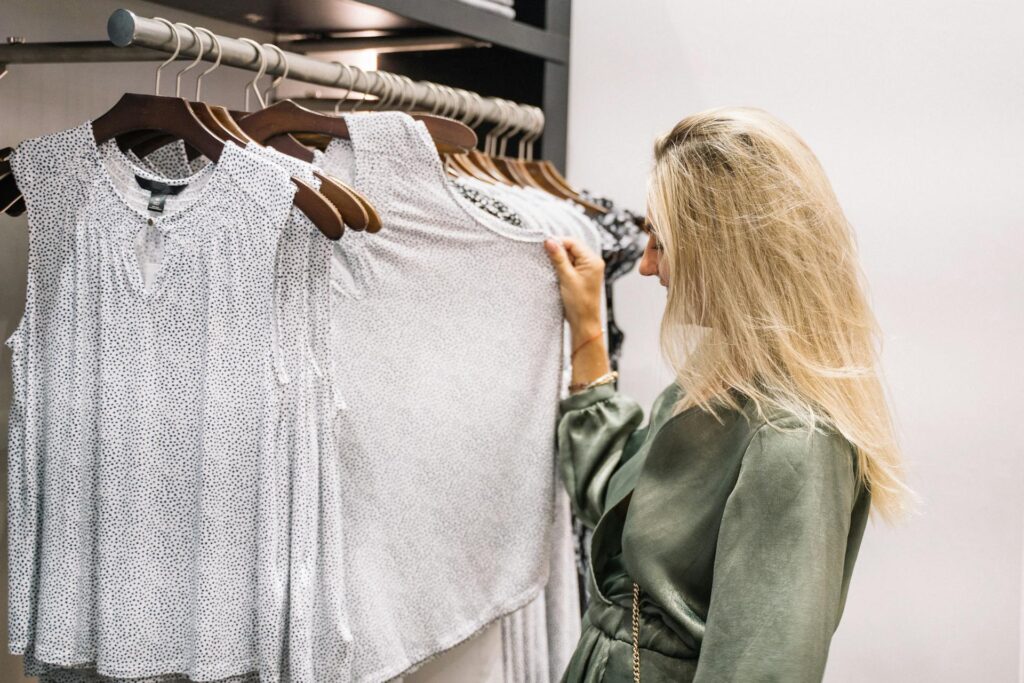Creating a sustainable and clutter-free wardrobe is not just about making your closet look neat and tidy; it is about adopting a mindful approach towards fashion that promotes environmental sustainability and personal well-being.
In this guide, we will delve into effective strategies for closet decluttering, ensuring you not only reclaim your space but also contribute to a more sustainable lifestyle.
Understanding The Need For Closet Decluttering
The first step towards a decluttered closet is recognizing the need to simplify.
A cluttered wardrobe can lead to wasted time during your morning routine, unnecessary stress, and even money spent on items you do not love or need. Moreover, the environmental impact of fast fashion and excessive consumption cannot be ignored.
By decluttering, you are not just freeing up space; you are making a conscious decision to reduce waste and support sustainable fashion practices.
Step 1: Set Clear Goals
Begin with a clear vision of what you want to achieve through your closet declutter. Whether it is making your morning routine more efficient, curating a capsule wardrobe, or reducing your environmental footprint, having specific goals will guide your decluttering process and help you stay motivated.
Step 2. Sort And Categorize
Start by taking everything out of your closet. Yes, everything! This gives you a clear idea of what you own and helps you decide what truly adds value to your life.
Sort your items into categories like tops, bottoms, dresses, accessories, etc. This will give you a clear overview and make the following steps more manageable.
Step 3: Consider Each Item’s Environmental Impact
As you sort through your items, consider the environmental footprint of your clothing. Use this decluttering opportunity toeducate yourself on sustainable materials and brands that align with your eco-friendly goals.
You could also explore advances in textile technology that have led to the development of eco-friendly synthetic fabrics. For instance, there are environmentally friendly polyester fabrics, which are made from recycled materials.
These sustainable polyester blends offer durability and versatility without compromising on environmental values. By choosing garments made from recycled polyester fabric, you are not only making a stylish choice, but also a sustainable one.
Step 4: Apply The Keep, Donate, Recycle Principle
For each item, ask yourself if it brings you joy, if you have worn it in the past year, and if it reflects your current style and lifestyle.
If the answer is yes, keep it. If no, decide whether it can be donated, sold, or needs to be recycled. Be mindful of the environmental impact of discarding textiles and opt for recycling or donating whenever possible.
● Repurpose And Upcycle
Before you decide to throw away clothes that no longer serve you, consider if they can be repurposed or upcycled. An old t-shirt can become a cleaning rag, a dress can be turned into a skirt, or a pair of jeans can be transformed into shorts. Get creative! This reduces waste and gives your clothes a second life.
● Donate Responsibly
When you have clothes that are still in good condition but no longer fit your style or needs, consider donating them. However, be mindful of where you donate.
Research local charities that accept clothing, and consider organizations that support those in need. Avoid contributing to the overwhelming donations that can lead to more waste.
● Sell Or Swap
Another sustainable option is to sell clothes that are in good condition but no longer wanted. Online platforms, consignment shops, and garage sales are great venues for this. Alternatively, organize a clothing swap with friends or family. It is a fun way to declutter and refresh your wardrobe without buying new.
Step 5. Create A Capsule Wardrobe
A capsule wardrobe consists of a minimal amount of garments that mix and match well to create numerous outfits. It encourages you to focus on quality over quantity, reducing the need for constant purchases and minimizing waste. Select timeless pieces that you love and wear often to form the basis of your capsule wardrobe.
Step 5: Organize and Store
Once you have decided what to keep, it is time to organize. Invest in quality hangers and storage solutions that will help maintain the shape and quality of your clothing. Organizing your items in a way that makes them easily accessible will not only make getting dressed more straightforward but also prevent you from buying duplicates of things you already own.
Step 6: Maintain A Curated Wardrobe
The key to preventing future clutter is adopting a more intentional approach to shopping. Before making a new purchase, ask yourself if it is something you truly need, if it complements your existing wardrobe, and if it’s made from sustainable materials.
This mindful approach to consumption will help you maintain a decluttered closet and support sustainable fashion practices.
The Benefits Of A Decluttered Closet
- Mental Clarity And Reduced Stress: A decluttered space can lead to a clearer mind and reduced anxiety, making your daily routine more pleasant and efficient.
- Environmental Sustainability: By choosing quality over quantity and opting for sustainable materials, you contribute to reducing the environmental impact of the fashion industry.
- Financial Savings: A more mindful approach to your wardrobe can lead to significant savings, as you invest in versatile, long-lasting pieces rather than fast fashion.
Conclusion
Closet decluttering goes beyond just tidying up; it is about embracing a lifestyle that values quality over quantity, sustainability over fast fashion, and mindfulness over mindless consumption.
By following these steps, you not only create a more organized and functional wardrobe but also contribute to a more sustainable world. Remember, each small step towards decluttering and sustainability can lead to significant positive impacts on both a personal and global scale.








